Rather than using the default geom_bar(stat = "count"), try geom_bar(stat = "identity"). You might easily calculate the percentage with dplyr. For example, consider ggplot2::mpg data,
This dataset contains a subset of the fuel economy data that the EPA makes available on http://fueleconomy.gov. It contains only models which had a new release every year between 1999 and 2008 - this was used as a proxy for the popularity of the car.
-- https://ggplot2.tidyverse.org/reference/mpg.html
ggplot2::mpg %>% select(manufacturer, year)
#> # A tibble: 234 x 2
#> manufacturer year
#> <chr> <int>
#> 1 audi 1999
#> 2 audi 1999
#> 3 audi 2008
#> 4 audi 2008
#> 5 audi 1999
#> 6 audi 1999
#> 7 audi 2008
#> 8 audi 1999
#> 9 audi 1999
#> 10 audi 2008
#> # ... with 224 more rows
manufacturer: model nameyear: year of manufacture
library(tidyverse)
1. Percentage versus year
You can calculate the percentage of each manufacturer over year. In other words, the sum of percentage over year in each manufacturer might be 1.
Also, you can use scales::percent instead of labels = function(x) paste0(x*100, "%").
mpg %>%
group_by(manufacturer) %>%
mutate(N = n()) %>% # number of each manufacturer
group_by(manufacturer, year) %>% # pair of manu, year
summarise(perc = n() / unique(N)) %>% # n() = number of each pair => n()/N = proportion
ggplot() +
aes(x = manufacturer, y = perc, fill = factor(year)) +
geom_bar(position = "dodge", stat = "identity") + # use y as y axis
scale_y_continuous(labels = scales::percent) +
theme(axis.text.x = element_text(angle = 45, hjust = 1),
axis.title = element_blank()) +
labs(fill = "Year")

Adding each tick(red and blue), you can get 100% each.
2. Percentage over year
On the other hand, you can compute proportion of manufacturer in each year so that the sum of each year becomes 1.
mpg %>%
group_by(year) %>%
mutate(N = n()) %>%
group_by(manufacturer, year) %>%
summarise(perc = n() / unique(N)) %>%
ggplot() +
aes(x = manufacturer, y = perc, fill = factor(year)) +
geom_bar(position = "dodge", stat = "identity") +
scale_y_continuous(labels = scales::percent) +
theme(axis.text.x = element_text(angle = 45, hjust = 1),
axis.title = element_blank()) +
labs(fill = "Year")

Adding each colour, you can get 100% each.


